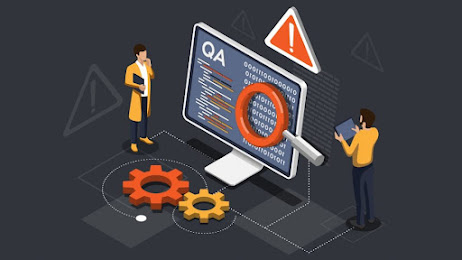Navigating Software Testing: A Practical Guide
Introduction:
In the ever-evolving realm of software development, ensuring the reliability and functionality of applications is paramount. Software testing emerges as a crucial gatekeeper, playing a pivotal role in delivering high-quality products to end-users. This article acts as a practical guide for navigating the intricate world of software testing, offering insights and strategies applicable to both novices and seasoned professionals.
Understanding the Essence of Software Testing:
Before delving into practical aspects, it's crucial to grasp the essence of software testing. At its core, software testing involves systematically evaluating a program to identify bugs, errors, and areas for improvement. This process guarantees that the software meets specified requirements and functions seamlessly in diverse scenarios.Key Components of Effective Software Testing:
Test Planning: Successful software testing commences with meticulous planning. Define clear objectives, establish testing criteria, and create a comprehensive test plan. This phase lays the foundation for a structured and effective testing process.
Test Design: Crafting effective test cases is an art. Consider various scenarios, inputs, and conditions to design tests that thoroughly evaluate the software's functionality. Well-designed test cases provide comprehensive coverage and increase the likelihood of detecting potential issues.
Execution and Automation: Executing test cases manually can be time-consuming, especially in large-scale projects. Automation tools significantly enhance efficiency by running repetitive tests, allowing testers to focus on more complex scenarios and exploratory testing.
Bug Tracking and Reporting: Identify and document any issues encountered during testing. A robust bug tracking system ensures that developers can address and resolve issues promptly. Clear and concise bug reports streamline communication between testing and development teams.
Practical Tips for Effective Software Testing:
Prioritize Testing Scenarios: Focus on testing scenarios aligned with user expectations and critical functionalities. Prioritizing testing efforts ensures that limited resources are directed towards areas with the highest impact.
Continuous Learning and Adaptation: The field of software testing is ever-evolving. Stay updated on the latest testing methodologies, tools, and industry trends. Embrace a culture of continuous learning to enhance your testing capabilities.
Collaboration with Development Teams: Foster a collaborative environment between testing and development teams. Regular communication and feedback loops contribute to a more efficient and seamless software development lifecycle.
Conclusion:
Success in the domain of software testing hinges on a practical and systematic approach. Testers achieve success through a grasp of fundamental principles, adherence to best practices, and maintaining adaptability. This approach enables them to navigate challenges adeptly and make substantial contributions to the production of high-quality software.As the software development landscape undergoes evolution, an unwavering commitment to excellence in software testing remains crucial. Further reinforcing this commitment is the incorporation of a software testing course in Kolkata, Alwar, Noida, Delhi, and other cities in India, equipping individuals with the skills necessary for testing proficiency. This dual strategy, combining a practical approach with targeted training, ensures professionals remain abreast of industry trends, enabling effective contributions to top-tier software development. It underscores the significance of continuous learning and proficiency in software testing for constructing robust applications in the digital age.


Comments
Post a Comment